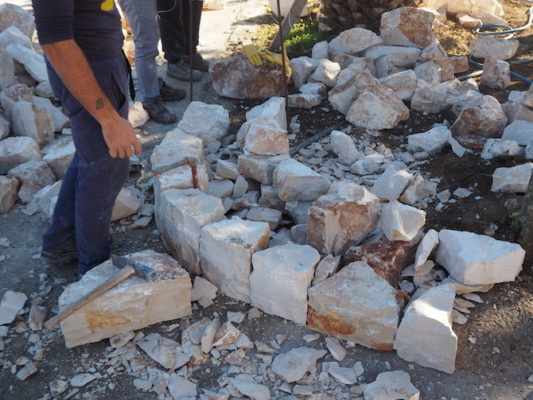Search
To search for an exact match, type the word or phrase you want in quotation marks.
A*DESK has been offering since 2002 contents about criticism and contemporary art. A*DESK has become consolidated thanks to all those who have believed in the project, all those who have followed us, debating, participating and collaborating. Many people have collaborated with A*DESK, and continue to do so. Their efforts, knowledge and belief in the project are what make it grow internationally. At A*DESK we have also generated work for over one hundred professionals in culture, from small collaborations with reviews and classes, to more prolonged and intense collaborations.
At A*DESK we believe in the need for free and universal access to culture and knowledge. We want to carry on being independent, remaining open to more ideas and opinions. If you believe in A*DESK, we need your backing to be able to continue. You can now participate in the project by supporting it. You can choose how much you want to contribute to the project.
You can decide how much you want to bring to the project.

With two guidelines, they’ve marked the trace to follow. Some 70 centimetres wide at the base, which shrinks as each new layer of stones is added. The have taken the stones in large blocks extracted directly from the quarry. They hit them here and there, with a mallet, before finally breaking them with a hard and decisive strike, to give them the form that most suits them. At a given moment Ibrahimaij Skender stops picking and loading stones. He looks at us and says, ”[[I mark the guide but I follow the stones. The stones guide me.]]. And goes back, crouching to place a stone, fitting it in with another. He and his father are making a dry-stone wall at the entrance to a house, between the garden and a pathway.
According to Wikipedia, this form of construction is the oldest known and examples of it are found across the world. According to the Pulian identity, it is in the region of Apulia –in the heel of Italy, where there are the most. According to the Ibrahimaij, it the Albanians are the ones who work best with stone a secco. According to a friend from Menorca, if we joined up all the dry-stone walls in Menorca, we could go round the world some three or four times. An acquaintance from Sicily told me that is in the region of Ragusa where there is the largest number, while someone from Cadaqués talked to me about the large number of contention walls to be seen in the vineyards of the Ampurda region, that are also dry-stone, and while all this happens, I realise that all I remember from the journey I made to Ireland when I was just 11 years old are fields full of stone walls and some cliffs. In reality, they asked me to write about margins, but on hearing this word I think about walls. Does this happen to you as well? Perhaps, it’s because the wall is the most rotund form with which to fill a margin. To build a wall where the limits of diverse realities are to be found is perhaps the most effective visual remedy to ambiguity. To reach a limit and erect a wall is to declare a big “NO”: “No, what lies beyond doesn’t belong here”. They say: “margins”; and I think of walls, perhaps because a wall makes us more aware of the margin, or, even in fact, makes the margin.
A paradigmatic wall, although not made of dry-stone, is the one being raised between the United States and Mexico. Even though its path follows the Río Bravo, its margins extend across the states of Arizona, California, Colorado, Nevada, New Mexico, Utah and Wyoming. All of them had been Mexican territory before the Treaty of Guadalupe Hidalgo (1848). Since when the Mexican population inhabiting these terrains has passed to be considered Mexican-Americans. It’s relevant that the line separating these two tribes that configures their identity is horizontal and not vertical. If it were vertical, it would be a wall, it would be an “or” (Mexican, or American). Because it’s horizontal it’s a bridge that crosses the Río Bravo, as is recognised by some of the most influential Chicana voices of the last three decades, like Gloria Anzaldúa, Cherrie Moraga or Emily Hicks, amongst others. They are inhabitants of ideological margins, recognised as border-crossers, beyond the physical obstacle that any constructed wall can suppose, be it in the abstract as much as the territorial dimension. Border-crossers are located in this third margin that other one that embodies the difference defined in the dialogue between the various dominant discourses. If the wall makes visible a limit in space, giving rise to the understanding that margins exist, the subject that inhabits these margins is, normally, a bridge between one side of the wall and the other. Because it is horizontal, the guide is an “and”: the Mexican-American is Mexican and American at the same time.
If we revise the traditional geography, we see that on the whole frontiers are understood as being classified as natural or artificial. Nevertheless, the geographer Richard Hartshorne placed this distinction in question, arguing that when studying territory “we are not dealing with bodies that can be delimited from each other, but (…) with mutually interpenetrating parts of a single, great, uneven surface, the earth-surface ” [[ Hartshorne, Richard, (1939). The nature of Geography: A Critical Survey of Current Thought in the Light of the Past, p. 268.]] It seems that to consider the existence of artificial and natural frontiers is a symptom of not remembering that we form part of the world in which we live and that it is a body. It’s as if we had excluded ourselves from it, considering ourselves as “extra-natural” beings. Perhaps we have forgotten what Vilém Flusser recuperates, that “pour l’habitant des cavernes, les murs étaient donnés, et c’est en s’opposant à eux qu’il les a peints, exprimant ainsi la volonté de l’homme à l’encontre de la nature”[[for the inhabitants of the caves, the walls were given, and it was opposing them that the painted them, expressing in this way man’s desire for an encounter with nature. Flüsser, Vilém, (1973). La force du quotidien, Paris: Maison Mame, p. 87]]. The walls were already there: they were the interior walls of those caves in which our ancestors lived, marking on those totally irregular surfaces the expressions of lives that were for nothing in the world linear. The paintings in the caves talk of a conjunctive language prior to the page, prior to the ordering of experience according to a linear temporal logic and also to the idea of the margin.
Margins are to be found at the limits of the fields, like the limits of the printed text on a page. The lines of crops in the earth or the lines of words on the paper, seem to be reaffirmations of the control that we humans believe we have over this disorder that surrounds us. On the margins of the fields there are walls to distinguish properties. In the margins of pages, commentaries and notations arise, from the readers that have traced the threads of printed words. When we pass pages we seek the future but if we read the notes in the margins we can see beyond a linear time, we can see the world as a sphere and intuit the possibilities of pathways to be followed in all directions, because multiple horizons of the past and the future surround us from all dimensions.

Anna Dot was born on a Sunday in April. She is from Torelló and works between two worlds, worlds that she cannot perceive as being in any way separate: one of artistic production and one of reflection, writing about contexts of art.
"A desk is a dangerous place from which to watch the world" (John Le Carré)